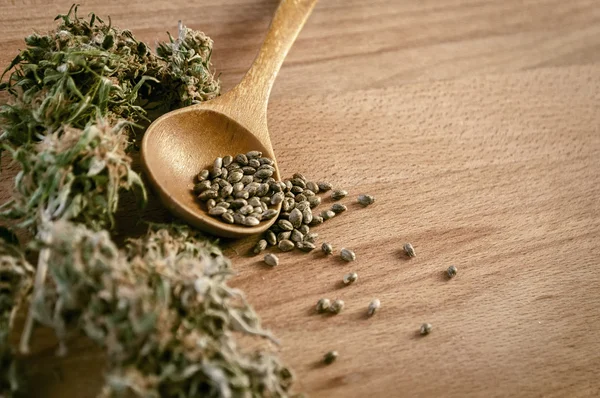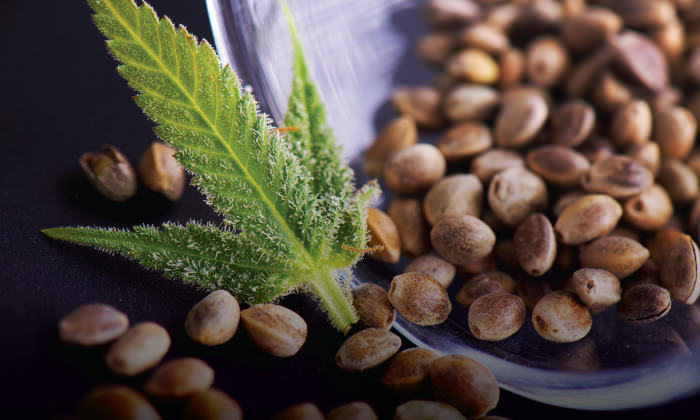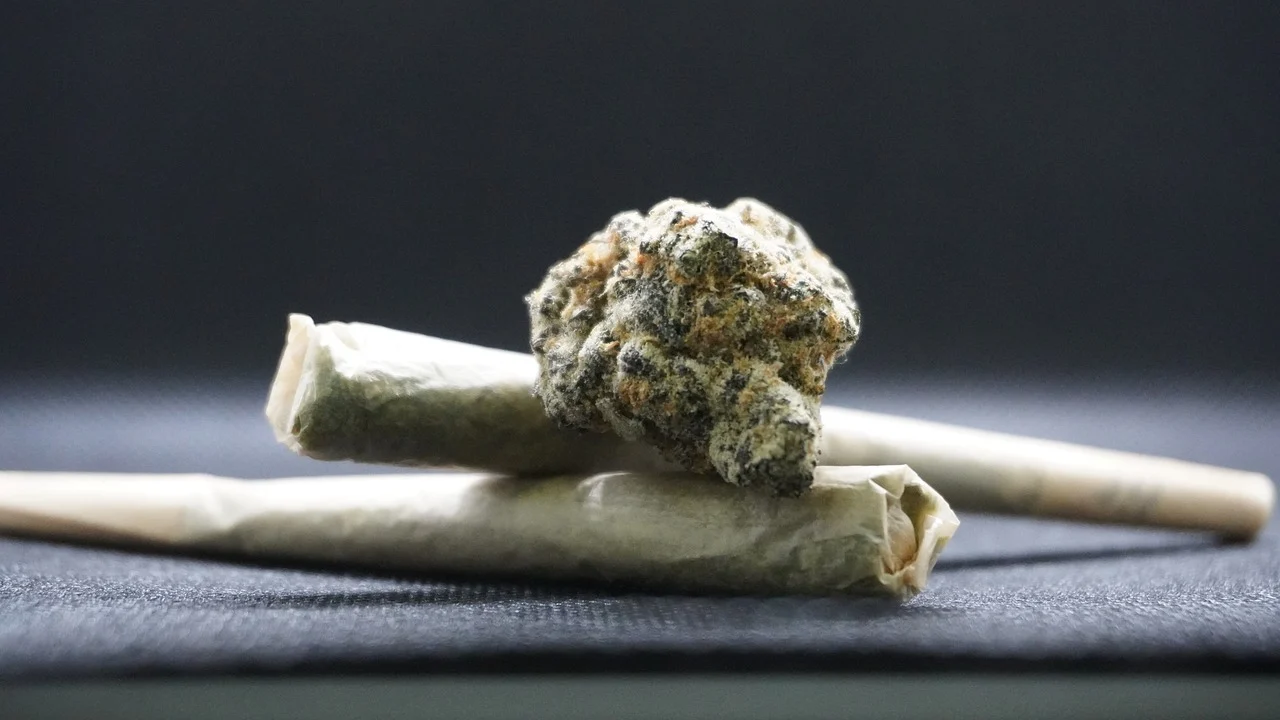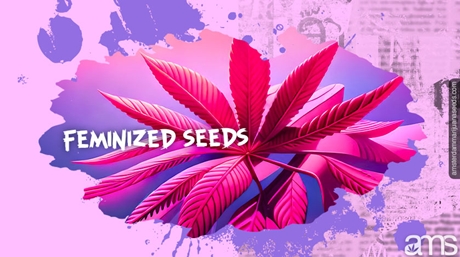Cannabis Sativa, better known as marijuana, is a plant that reproduces sexually through pollination, where male pollen fertilizes the female flower, resulting in the formation of seeds containing the genetic combination of both parents. Before embarking on cultivation, it is essential to understand the different types of marijuana seeds available on the market.
Since the 1990s, the variety of marijuana seeds available has undergone a radical transformation. Before this time, growers had limited options, as they could only choose between indica, sativa, or hybrid seeds in their regular version. However, thanks to the tireless research and development carried out by seed banks, the current offer has expanded significantly, offering an unimaginable diversity that satisfies the needs of all those interested in cannabis.
Within this wide range of available cannabis genetics, it is essential to understand the distinction between photoperiod-dependent and autoflower marijuana seeds, as this impacts their life cycle and cultivation requirements.
Photoperiod-dependent and autoflower seeds are two main categories based on their response to light:
Photoperiod-dependent varieties grow and flower based on the duration of light exposure.
Autoflowering varieties have a life cycle independent of the light period, meaning they automatically flower at a specific period, regardless of the hours of light received.

Indica varieties are known for their excellent production-to-life cycle ratio. In general, they are more productive than Sativas and have a shorter development period. However, their bud density, while beneficial in terms of production, also makes them more susceptible to mold, especially in areas with high humidity and temperature.
Each cannabis species is distinguished by its unique growth characteristics. Indica seeds tend to develop with a shape similar to a fir tree, which facilitates increased production through techniques such as topping or LST, allowing better light penetration into all parts of the plant. Additionally, their dark green color and wide leaves are distinctive traits of these varieties.
Due to their low stature, Indica cannabis seeds are ideal for indoor cultivation or in confined spaces. Their short flowering cycle also makes them suitable for outdoor cultivation, as they will be ready before the arrival of the first frost.
cannabis sativa strains, although less productive than indica, require planting more specimens to obtain the same amount of harvest. However, their buds are more airy and fluffy, giving them greater resistance to moisture and mold. Additionally, these marijuana seeds have higher THC levels, resulting in more cerebral and energizing effects, along with exotic and tropical flavors that make them highly valued by growers.
During the flowering phase, the cannabis sativa plant tends to grow airy and elongated, with leaflets of more separated leaves and lighter green tones. Due to its tall stature and space requirements for growth, cultivating sativa seeds indoors or on balconies generally involves the use of techniques that encourage horizontal growth rather than vertical.
Marijuana hybrid seeds are obtained by combining two types of genetics, usually Sativa and Indica, with the aim of, improving certain characteristics. Hybridization goals often include reducing flowering time in sativa varieties, introducing exotic flavors in classic indica varieties, or increasing productivity in sativa varieties by producing denser and more compact buds.
Seed banks continuously carry out hybridization processes to develop new varieties and offer the best options to their customers. By crossing two varieties, different phenotypes emerge, meaning plants with different characteristics but with the same genetic base. Banks select those phenotypes that best fit their goals to stabilize them and offer their optimal version.

Ruderalis seeds are less known, as practically no bank directly markets them. However, they are used in hybridization processes to turn other varieties into autoflower ones after proper stabilization, through crossing with another species.
Cannabis Ruderalis is a wild plant native to the coldest regions of northern Europe, central Russia, and Siberia. Adverse conditions, such as short daylight hours and constant frosts, have led this variety of marijuana seeds to adapt to the environment, flowering without depending on changes in the photoperiod and enduring extremely low temperatures.
These marijuana seeds have THC levels below 3% and exhibit minimal growth compared to other varieties. They are compact, robust, and resistant, often growing similar to weeds. Although they produce small but dense buds, their low THC and CBD content limit their commercial interest, except for use in hybridizations aimed at obtaining autoflowering varieties.
Apart from being classified according to the type of marijuana seed, cannabis can be categorized in other ways, such as its photoperiod dependence, sex, or THC and CBD levels.
Regular seeds were the first ones used in cannabis cultivation. They have the peculiarity of germinating both male and female plants. This presented an inconvenience for those interested in obtaining a large quantity of flowers, as approximately 90% of these seeds germinate as male plants. Males produce pollen, necessary to fertilize females and produce seeds, but female plants are the ones that produce the highest quality flowers. A female fertilized by a male results in low-quality production, with many seeds. Therefore, it was crucial to eliminate male plants once identified. Currently, the use of these seeds is mainly limited to growers looking to breed their own hybrids or seed banks with similar purposes.
Indoor cultivation: You should consider planting regular seeds when your goal is to cross plants to create new genetics, produce seeds, or explore unique varieties through the wide genetic diversity offered by these seeds.
Outdoor cultivation: It is advisable to plant regular seeds when conditions allow for a longer growing season and more space for the plants to develop.

Feminized seeds have been genetically altered to ensure that they only produce female plants, resulting in the exclusive formation of coveted flowers. This feminization process of conventional marijuana seeds is painstaking work that requires extensive testing and time to ensure its stability and uniformity, allowing for commercialization under the “feminized” category.
Although this feminization method achieves an effectiveness of 99.9%, there is a minimal possibility that a male plant may still germinate. However, feminized seeds are preferred by leading growers due to their convenience. They eliminate the need to identify and remove male plants, ensuring a harvest of high-quality buds with basic care.
Autoflowering seeds have the ability to transition to the flowering phase regardless of the environmental conditions surrounding them. Programmed to flower after a specific growth period, they are extremely easy to cultivate and can develop with just a few hours of daily light. Their resistance to light pollution makes them suitable for various environments.
These seeds are ideal for beginners or people with little time available, as they require less attention and can flower at any time of the year. They are created by combining genetics of feminized or regular seeds with Ruderalis, giving them a shorter life cycle and the ability to autoflower under any circumstance.
Although their individual productivity may be lower than feminized seeds, auto-flower seeds offer the advantage of multiple harvests in a year due to their rapid life cycle. This makes them an attractive option for those seeking quick and discreet harvests, especially in confined spaces.
CBD marijuana seeds share characteristics with feminized, regular, or autoflower varieties, but are distinguished by their higher CBD content compared to conventional varieties. Additionally, in many cases, the aim is to minimize the THC level so that they can be used for medicinal purposes.
However, these seeds never contain adequate concentrations of THC for use in legal CBD product production, which currently must be below 0.2%. For this purpose, hemp seeds are used. Despite this, CBD marijuana seed varieties still offer more relaxing and stress-relieving effects than other varieties.
Unlike CBD seeds, hemp seeds always contain THC levels below 0.2%, ensuring a predominance of CBD. Also known as industrial hemp, this variety is used for CBD extraction and the production of therapeutic products. However, the CBD levels obtained from hemp never reach those achieved with CBD seeds.
Hemp seeds are not only used for obtaining cannabidiol but also for extracting strong fibers used in various industries, such as textile, paper, insulation, rope manufacturing, fuel, paints, cosmetics, among others. Additionally, hemp seeds are edible and can be consumed as oil, whole, raw, toasted, or ground into flour.
Like CBD marijuana seeds, Fast Version seeds have similar characteristics to regular or feminized varieties, but their life cycle is shorter than usual, allowing for harvesting before the first October frosts.
Indeed, many of these types of seeds can be combined. Sativa, Indica, hybrid, or Ruderalis varieties can be presented in feminized, regular, autoflower, or Fast Version forms. Hemp seeds, on the other hand, belong to the sativa group.














Related Posts

Autoflowering seeds are seeds that produce plants that will naturally start flowering. They do that completely on their own.

Amsterdam Marijuana Seeds (AMS) offers a wide selection of premium feminized marijuana seeds, carefully selected and tested to ensure high germination rates and consistent quality. Feminized seeds are highly sought after because they guarantee that every plant grown from the seed will be female, which is necessary for producing high-quality cannabis flowers. AMS also offers expert advice on cultivation techniques and equipment, making it a great choice for both beginner and experienced growers. With discreet packaging and shipping, AMS is committed to providing its customers with the best possible products and service. Order marijuana seeds today and start your journey to growing your own premium cannabis.

Welcome to our comprehensive guide on greenhouse cultivation, where we unveil the top cannabis seeds specifically curated for optimal results in this controlled growing environment. As a leading marijuana seeds company, we understand the significance of choosing the right strains to maximize yield, quality, and potency. In this article, we will explore the premium cannabis strains offered by our company…